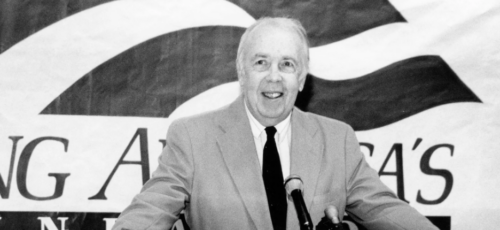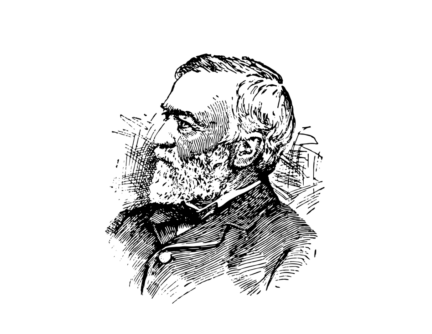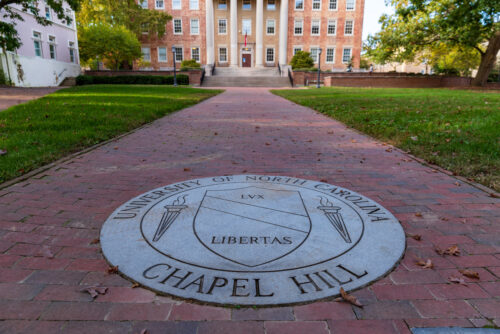Some claim that the organization’s once non-partisan agenda has become overly politicized in recent years…
John O’Sullivan once created a law that said that all organizations that were not explicitly right-wing would become left-wing. As this informative article by Shohab Ahmari in Commentary shows, this may be happening at Teach for America.
Ahmari, a Commentary staff writer who served as a Teach for America fellow in 2005, says that the organization’s once non-partisan agenda has been transformed into an organization that stresses “immigration, policing, ‘queer’ and transgender-identity issues, and other left-wing causes.”
Teach for America was founded by Wendy Kopp in 1989, when she was a senior at Princeton. She found a genuine problem: she wanted to be a teacher, but couldn’t get a job easily because of certification requirements. So she started an organization that would train people to teach inner-city kids. Those children faced formidable obstacles to their education. The teachers’ unions would argue that there was no social problem in education that would be solved by throwing giant piles of money into the schools. In addition, union rules in many cities ensured that the teachers of inner-city kids tended be those who were either disciplined but couldn’t be fired or older teachers who had burned out[1] but were grimly hanging on until their pensions vested.
What Teach for America realized was that they could follow an alternative vision, one in which young teachers could inspire students to do better in school. The organization, says Ahmari, “brought the work habits traditionally associated with large law firms and high-end consultancies to America’s K-12 failure factories.” Recruits spent a summer in an intensive institute and then leapt into public schools.
The rise of Teach for America worked in tandem with the rise of charter schools, which could relax certification requirements mandated by heavily unionized public schools.
In a 2013 column from the Harvard Crimson, Sandra Y.L. Korn cites complaints from the Boston and Chicago teachers’ unions stating that school systems were sacking union members and replacing them with Teach for America recruits. She concludes that the organization undermines “American public education system from the very foundation by urging the replacement of experienced career teachers with a neoliberal model of interchangeable educators and standardized testing.”
James Cersonsky, in this 2013 article from The American Prospect reports on preparations for a conference called “Organizing Resistance for Teach for America And Its Role in Privatization,” which was “to challenge the organization’s centrality in the corporate-backed, market-driven, testing-based movement in urban education.”
So Teach for America has clearly acquired enemies on the left, who are allies of the teachers’ unions.
Ahmari’s charge is that, with the departure of Wendy Kopp and her replacement by Elisa Villanueva Beard, the organization “now increasingly functions as a platform for radical identity politics and the anti-Trump ‘resistance.’”
I think Ahmari partially proves his case. He shows that there are radicals in Teach for America, but he fails to show that the curriculum has been altered or that the ordinary experience of a Teach for America recruit has changed.
Ahmari’s evidence is a bunch of press releases, some speeches by Beard, and some panels at Teach for America’s annual convention. For example, after Betsy DeVos was appointed Secretary of Education in 2016, Teach for America’s response was to say that it would “continue to fiercely advocate and defend policies that are core to our mission,” including “SAFE classrooms for LGBTQ youth and teachers,” “Safe classrooms for students and teachers with disabilities,” and “Safe classrooms for Muslim students and teachers.”
He also notes that Beard, at the 2016 conference for Teach for America’s 25th anniversary, said that the organization she leads was “more diverse than we have ever been…We are a community that is black, that is Latino, that is white, that is American Indian, that is Asian and Pacific Islander, that is multiracial. We are a community that is lesbian, gay, bisexual, queer, and trans.”
Finally, he notes that there were many radical panels at the conference, whose titles I don’t care to repeat.
But all the emphasis on identity politics at Teach for America misses a key point: it doesn’t really matter if a teacher is white, black, gay, straight, or anything else. What matters is this: are children learning? Are they doing better in school?
Isn’t it more important to worry about whether a child learns to read, write, and count than obsessing over the race or sexual preference of a teacher?
Ahmari quotes many “woke” African-American parents who are concerned about how the schools are failing their children. Their anger is justified, but the solution is to come up with ways to make sure that their children aren’t falling farther and farther behind and that their schools are safe.[2]
What Ahmari does not show is whether Teach for America’s methods have changed, or if the ordinary experience of the average Teach for America volunteer has changed. He quotes Diane Ravitch, who chortles every time Teach for America stumbles, but there surely must be outside observers who study Teach for America and can report on if and how the organization is changing.
Finally, he notes that Teach for America has long enjoyed strong support from the Gates, Broad, and Walton Family Foundations. This support has ensured that the organization, according to its 2015 Form 990, has an endowment of $493 million and a budget of $357 million. However, the Washington Post noted in 2016 that Teach for America had slashed 150 jobs, or 15 percent of its workforce.
Aren’t program officers at these foundations encouraged to talk to the press? I’m sure they have opinions about Teach for America they’d be willing to share.
My sense from Ahmari’s piece is that it’s too early to tell if Teach for America has been captured by the left. He’s right that the warning signs are there, but he fails to show that a decisive ideological shift has taken place.
[1] In Angry Classrooms, Vacant Minds I looked at the issue of “teacher burnout” and learned that, while teachers were the first professionals to say they were subjects of burnout, the term was invented by Graham Greene in his novel A Burnt-Out Case.
[2] I remember 20 years ago that John Stossel, when he was at “20/20” went to the heads of the National Education Association and the American Federation of Teachers and said he wanted to do a story about something that the unions and he both realized was a problem. The result was a segment about inner-city teachers being threatened by thugs.







Don’t know if anything’s changing, but I was in TFA a few years ago, and in my view it’s always been a mishmash of corporate neoliberalism (which is conservatism of a sort, in the parlance here used) and leftist politics. The structure of TFA is MBAified to the max, yet 98% of the participants *within* that structure–young teachers and TFA staff alike–identified with typical left-leaning identity politics and a social justice orientation. It’s amazing the whole thing has stayed together.